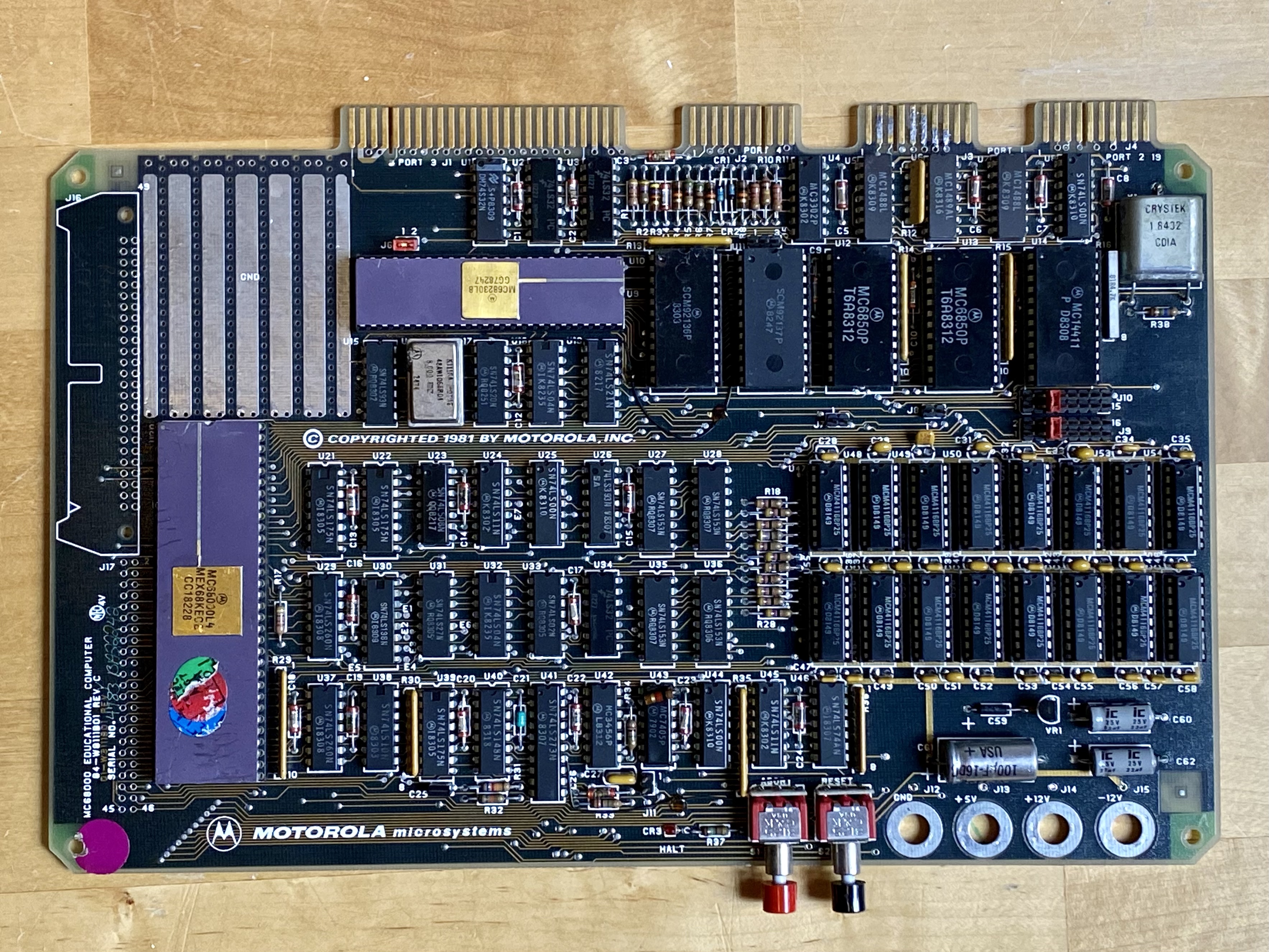Motorola 68000 Educational Computer Board on:
[Wikipedia]
[Google]
[Amazon]
 The Motorola 68000 Educational Computer Board (MEX68KECB) was a development board for the
The Motorola 68000 Educational Computer Board (MEX68KECB) was a development board for the
Early microcomputers Microcomputers Single-board computers Computer-related introductions in 1981
 The Motorola 68000 Educational Computer Board (MEX68KECB) was a development board for the
The Motorola 68000 Educational Computer Board (MEX68KECB) was a development board for the Motorola 68000
The Motorola 68000 (sometimes shortened to Motorola 68k or m68k and usually pronounced "sixty-eight-thousand") is a 16/32-bit complex instruction set computer (CISC) microprocessor, introduced in 1979 by Motorola Semiconductor Products Sector ...
microprocessor, introduced by Motorola
Motorola, Inc. () was an American multinational telecommunications company based in Schaumburg, Illinois. It was founded by brothers Paul and Joseph Galvin in 1928 and had been named Motorola since 1947. Many of Motorola's products had been ...
in 1981. It featured the 68K CPU, memory, I/O devices and built-in educational and training software.
Hardware
* CPU: 4-MHz
The hertz (symbol: Hz) is the unit of frequency in the International System of Units (SI), often described as being equivalent to one event (or cycle) per second. The hertz is an SI derived unit whose formal expression in terms of SI base u ...
Motorola 68000
* RAM
Ram, ram, or RAM most commonly refers to:
* A male sheep
* Random-access memory, computer memory
* Ram Trucks, US, since 2009
** List of vehicles named Dodge Ram, trucks and vans
** Ram Pickup, produced by Ram Trucks
Ram, ram, or RAM may also ref ...
: 32 KB
* ROM
Rom, or ROM may refer to:
Biomechanics and medicine
* Risk of mortality, a medical classification to estimate the likelihood of death for a patient
* Rupture of membranes, a term used during pregnancy to describe a rupture of the amniotic sac
* ...
: 16KB
* 9600 baud
In telecommunications and electronics, baud (; symbol: Bd) is a common unit of measurement of symbol rate, which is one of the components that determine the speed of communication over a data channel.
It is the unit for symbol rate or modulat ...
serial port
A serial port is a serial communication Interface (computing), interface through which information transfers in or out sequentially one bit at a time. This is in contrast to a parallel port, which communicates multiple bits simultaneously in Pa ...
for dumb terminal
A computer terminal is an electronic or electromechanical hardware device that can be used for entering data into, and transcribing data from, a computer or a computing system. Most early computers only had a front panel to input or display ...
connection
* 9600 baud serial port for host computer connection
* Parallel port
In computing, a parallel port is a type of interface found on early computers ( personal and otherwise) for connecting peripherals. The name refers to the way the data is sent; parallel ports send multiple bits of data at once (paralle ...
for communication and printer connection
* Audio output for tape storage
* 24-bit programmable interval timer
* Wire-wrap area for custom circuitry
* Required power voltages: -12V, +5V and +12V
Software
The board has built-in 16K ROM memory containing assembly/disassembly/stepping/monitoring software called TUTOR. The software was operated usingcommand-line interface
A command-line interface (CLI) is a means of interacting with software via command (computing), commands each formatted as a line of text. Command-line interfaces emerged in the mid-1960s, on computer terminals, as an interactive and more user ...
over a serial link, and provided many commands useful in machine code debugging. Memory contents (including programs) could be dumped via a serial link to a file on the host computer. The file was transferred in Motorola's S-Record format. Similarly, files from host could be uploaded to the board's arbitrary user memory area.
Price
The price of the Motorola ECB at launch was which was relatively inexpensive for a computer with an advanced for that time 16/32-bit CPU.Use
According to the manual, for basic use only a dumb terminal and power source are required. However, it seems that in colleges the board was predominantly used in connection with a time-sharing host computer to teach assembly language programming and other computer science subjects.References
{{Reflist MC68000 Educational Computer Board User's ManualExternal links
* MC68000 Educational Computer Board User's ManuaEarly microcomputers Microcomputers Single-board computers Computer-related introductions in 1981